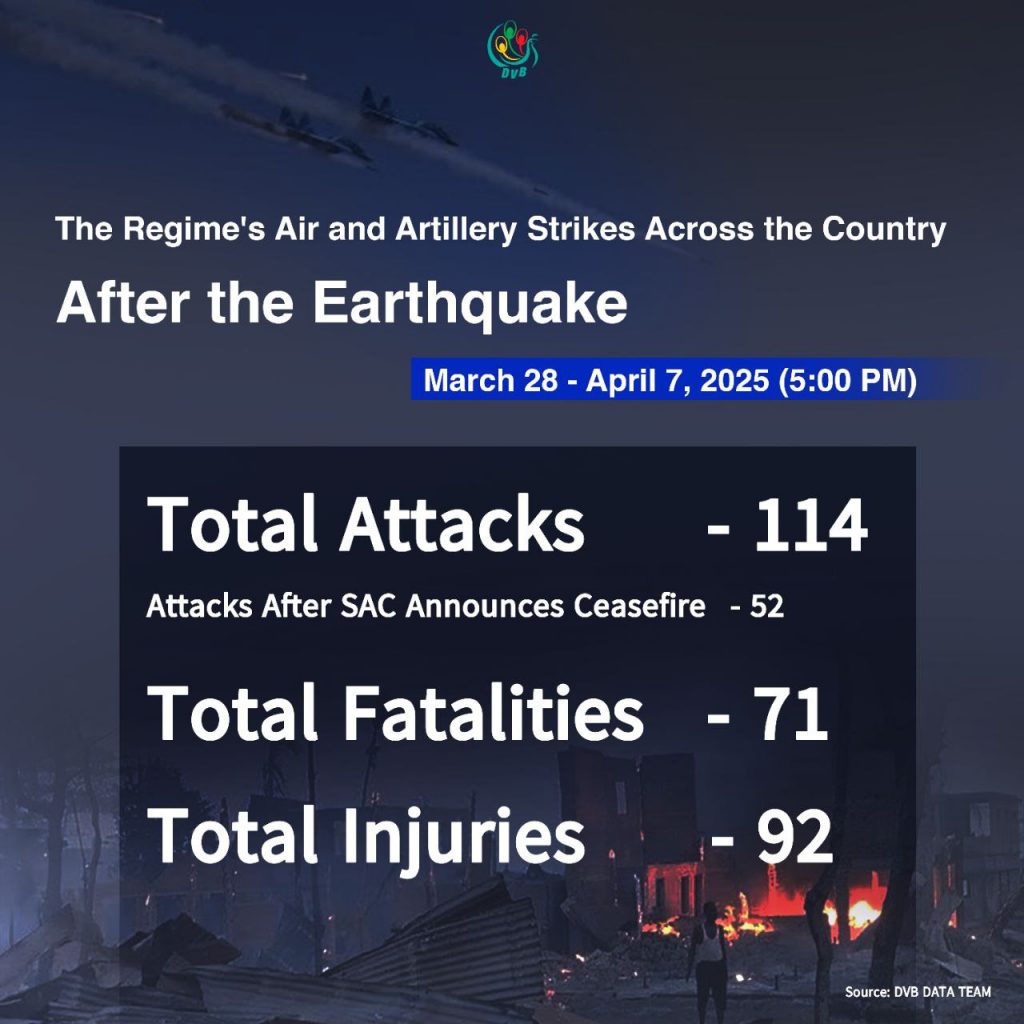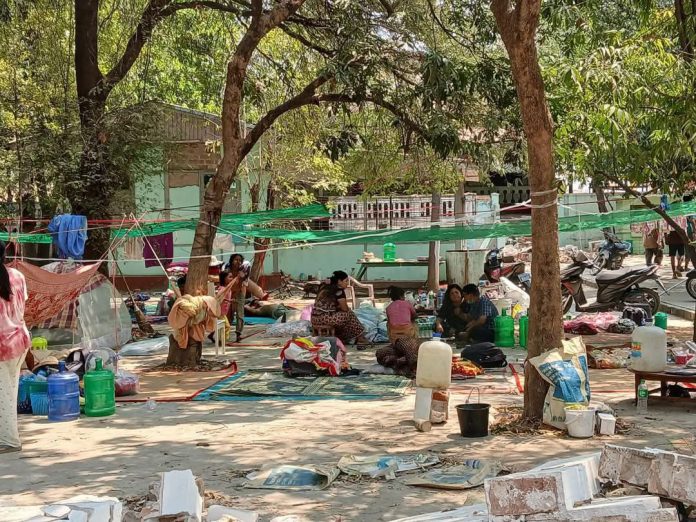Naypyidaw investigates aid workers in Sagaing Region
The regime Ministry of Home Affairs instructed its Bureau of Special Investigation to record the personal information of aid workers providing earthquake relief in Sagaing Region, a source close to the ministry told DVB on condition of anonymity. This new measure coincided with Min Aung Hlaing’s visit to Sagaing, the epicenter of the earthquake, on Sunday.
“[The intelligence officials will record] where the volunteers come from, where they go, what they donate, and whether they donate individually or as a group,” the source added. Sagaing is located 68 miles (109 km) east of the region’s capital Monywa and 14 miles (22 km) west of Mandalay. Aid workers claimed that they are receiving no assistance from the regime.
“We have to inform the authorities about our equipment and personnel upon arrival. They decide where we can go,” a spokesperson for an aid group working in Sagaing and Mandalay regions told DVB. Regime Deputy Minister Soe Win stated on Saturday that aid groups must obtain approval from regional authorities and cooperate with them during their relief operations in central Myanmar. Read more.
Yangon under increased security post-earthquake
Residents in Yangon have reported “heightened” security measures enforced by regime authorities following the March 28 earthquake. “I’ve noticed an increased presence of security personnel around Sule Pagoda, including near the pedestrian overpass and traffic lights in the area. There are also more police and military vehicles patrolling the town,” a Yangon resident told DVB on condition of anonymity.
At least 1,870 rescue workers from 16 countries have arrived in Burma to assist with earthquake relief efforts, according to DVB data. Most entered via the Yangon International Airport, as the country’s largest city remained relatively unaffected by the 7.7 magnitude earthquake that struck central Burma, with Sagaing and Mandalay two of the six regions hardest hit.
“[Regime officials] are giving guided tours around Yangon for the aid workers. So I think they’re worried that anti-regime forces might stage [protests] while the international community is here,” another Yangon resident told DVB. Since the 2021 military coup, many anti-coup flash mob protests have taken place in Yangon, with the latest on Feb. 1, to mark the fourth year since the coup.

How Myanmar became the world’s deadliest country for landmines
The International Day for Mine Awareness and Assistance in Mine Action was Friday. To discuss how Myanmar became the world’s deadliest country for landmines, Yeshua Moser-Puangsuwan, the author of the Landmine Monitor report on Burma, joined us in the DVB Newsroom.
“Landmines have been laid where people are fleeing armed conflict. And so there are more casualties every year. And now the casualties are at a very high rate. [Burma] has surpassed Syria, Ukraine, Afghanistan, which previously were the countries that had the most landmine casualties in the world,” Moser-Puangsuwan told DVB.
Watch DVB Newsroom podcast season 2 episode 12 featuring Yeshua Moser-Puangsuwan on how Burma became the world’s deadliest country for landmines on DVB English News YouTube or Spotify. Or if you prefer to listen to the audio version, find us on Apple Podcasts, YouTube Music, Audible, Amazon Music, or wherever you get podcasts.
News by Region
ARAKAN—Pauktaw Township residents told DVB that a total of 23 fishermen were detained by the Burma Navy and their boats were confiscated near Myayngu island on Saturday. Pauktaw is located across the river from the state capital Sittwe.
“The fishermen returned from Mrauk-U after selling their fish and were arrested by the navy in the sea. They were taken to Kyaukphyu [Township],” a Pauktaw resident told DVB on the condition of anonymity. Pauktaw came under Arakan Army (AA) control on Jan. 24, 2024.
SAGAING—The People’s Defence Force (PDF) and residents of Butalin and Chaung-U townships told DVB that motorized paraglider attacks killed four civilians and injured at least six others in three villages on Sunday. Butalin and Chaung-U are located 23-26 miles (37-41 km) north of the region’s capital Monywa.
“They are doing these attacks especially at night time when people are sleeping,” a PDF member told DVB. The regime announced a ceasefire from April 2-22 but air and artillery attacks have been reported across the country every day since. Residents told DVB that there was no fighting between the PDF and regime forces in Butalin or Chaung-U.
YANGON—Residents in downtown Yangon told DVB that the Thingyan pavilion in front of the Yangon City Hall was taken down on Sunday. Construction for the pavilion used for the annual water festival began on March 27.
“The construction of the pavilion was halted,” a resident told DVB on the condition of anonymity. The regime announced on April 1 that this year’s Thingyan will not include singing or dancing, due to the national mourning for those who died in the March 28 earthquake. Yangon was largely unaffected by the earthquake, residents told DVB.
(Exchange rate: $1 USD = 4,430 MMK)




